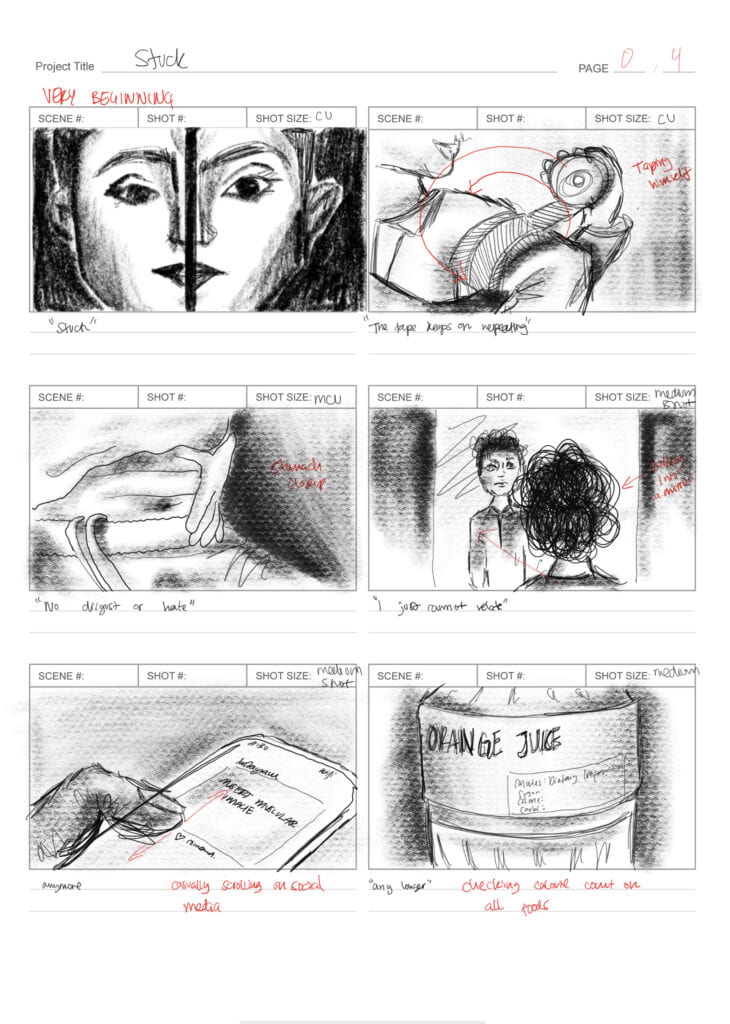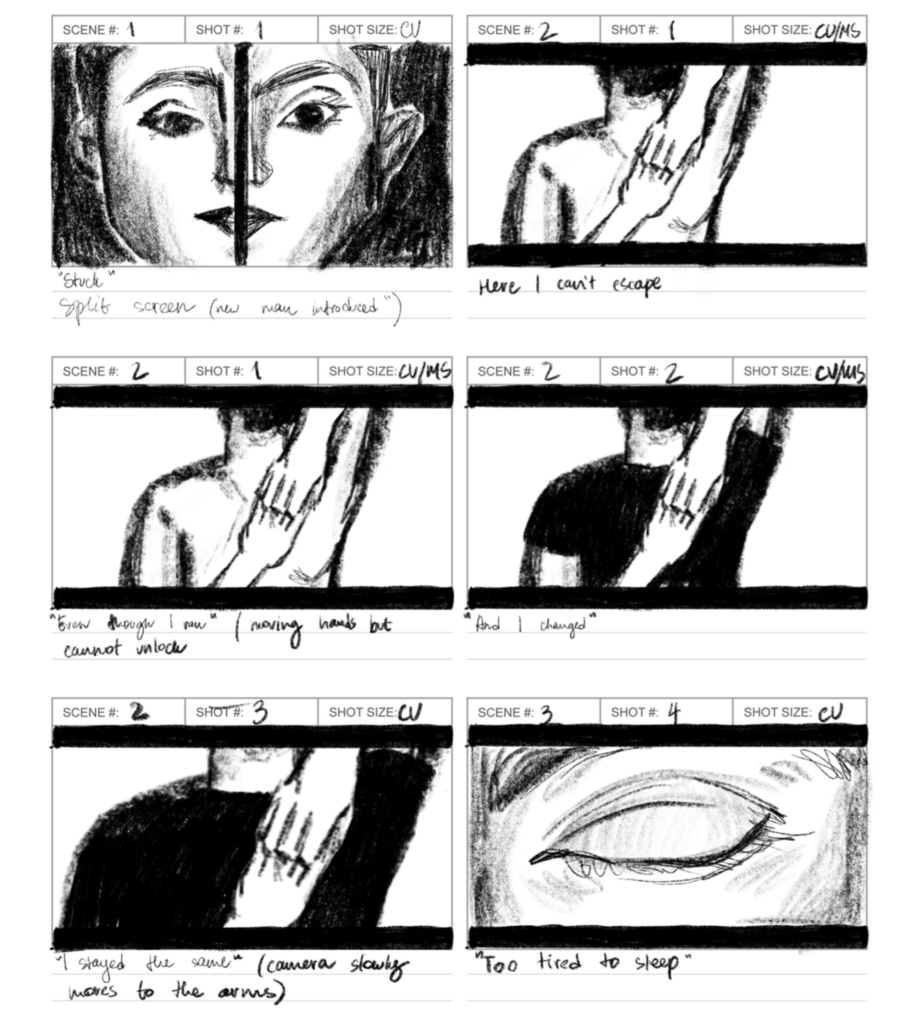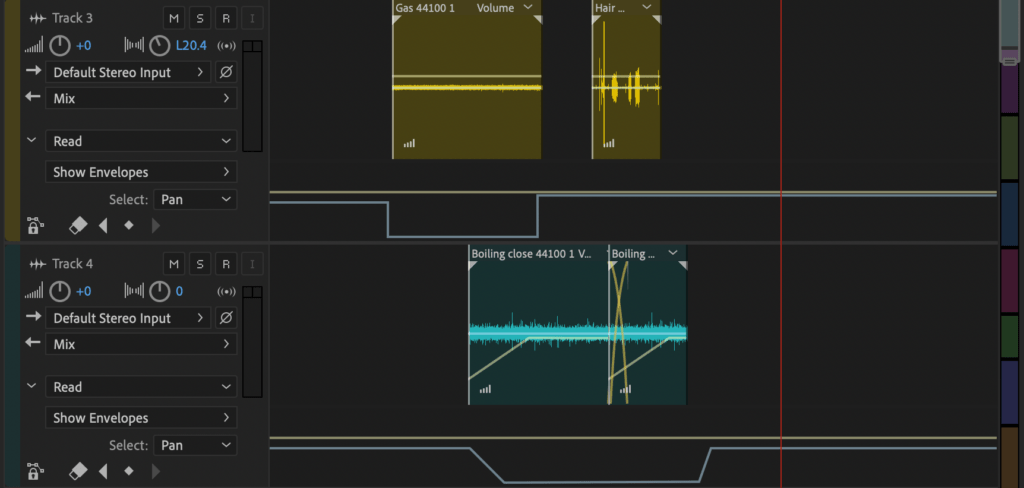A. Concept & Story (written together)
Describe the concept & the story in your project.
What inspired you to create this project?
Describe your ideation process?
Why do you want to explore this topic?
The concept of the visual metaphor revolves around the idea of feeling stuck within the confinements of your own body that exists in the male gender. It is an issue that is not as societally covered when compared to the issue of body image amongst women. Regardless of the lack of coverage, it does not diminish how real and present the issue really is. I also took inspiration from the observation of my own brother’s situation as he too struggles to accept his own body image. This is fueled by the expectations of what an attractive man should look like. He often struggles to obtain this and goes through rigorous fitness and supplemental progress to achieve this. I wanted to explore this project to shed more light on the real issues that men also face because of male beauty standards.
In the aspect of the visual metaphor, we decided to use a poem written by XX called Stuck. In this poem, the poet expresses the feeling of reliving the same monotone life. In particular, feeling stuck in the constant loop of ordinary and unfulfilling life. The feeling of being stuck in his life then is also a visual metaphor for unsatisfied men feeling stuck in their own bodies.
B. Creation Process & Execution (written together)
Our initial storyboard as well as our final product is divided into four sections. This is because the poem is also divided into four stanzas. At the end of each stanza, the word stuck is repeated throughout these four sections. We decided to use the existing sectioning of these four stanzas for four characters in the film. Each stanza would then reflect the experience of four different men struggling with the same issue, body image. We did this to show the various ways in which they deal with or attempt to conform to these standards. For example, a character can deal with body image through strict dieting regimens and another can deal with self-deprecation.
Describe the process of choosing a setting, shooting, sourcing materials, lighting, directing (if applicable)
In order to best fit the concepts of our film, we decided that each set and or environment should be contrasting with each other. We did this to clearly show that men from all backgrounds and or places can struggle with the same thing. The way in which we shot our scenes was also shot in the way to accentuate different things. The main object regarding the demonstration of all of these different sections is that we tried to make changes in all aspects. We wanted to contrast lighting, background, costume, and shooting but with the overlaying constant of the audio. This is what we managed to achieve in the final film.
Describe the challenges you encountered during the content creation process, and how you solved or overcame them.
The biggest challenges that we faced were regarding the audio recording and file sharing process. The audio recording process what difficult since we weren’t able to record in the same environment and on the same device. This meant that the audio quality varied for both of our recordings. Not only this, but the environmental differences meant that our devices would pick up different levels of background noise. This led to our audio piece being less smooth than planned. The sections in which one person recorded would sound different from the section that another recorded. Even with the ability to remove noise using Audition, the quality was still different and we couldn’t get the audio to perfectly match. The second issue is with the efficacy of file sharing. I and the other partner filmed 2 sections each of the project. I faced issues obtaining these files at the final stages of the project creation. Anya has sent me files of her project, which were overexposed once I downloaded it. Her computer did not view her footage as overexposed. However, as soon as I received them or downloaded them from both Slack and Google Drive, the footage was overexposed making me unable to work with it. This greatly affected my freedom to manipulate her footage as the quality of raw footage was significantly affected.
Describe your editing & Post-Production process, you may share a few screenshots from Premiere about the editing techniques and effects you learned.
The progress of editing the footage was relatively simple. The storyboard and the sectioning of the film itself were clearly outlined from the beginning making it easier to edit with guidelines. For the audio part of the project, we used noise cancellation to reduce the background noise and to make the audio parts flow smoothly. The compiling of the scenes was quite simple, we simply edited them according to the lines of the poem. We then did some color correction and added effects to make all the scenes black and white. Since the shots were sent from different people we had clear differences in lighting. We needed to increase and or decrease black point and greyscale to make them merge better with one another. We also made a split-screen every time the word “Stuck” was mentioned to create a transition between the different men. The split-screen was used in a way to “hand off” one life to another while avoiding a rough change.
Describe your own role in and contribution to the project. Express appreciation for the work your teammate did. How did the collaborative process and exchange with your partner inform your project? Was there something you learned from your partner?
I think that this was 100% a team project. I personally wouldn’t have been able to get all of the footage as well as fulfill the films changing characters alone. During the time of the filming and still, now, I was placed in a full city lockdown. I was fortunate to have two men currently living with me, a friend and my brother, which allowed me to complete 2/4 sections to shoot. My partner also filmed 50% of the scenes and we simply exchanged this once we filmed our sections. We both equally filmed and recorded exactly 50% of the project making our collaboration essential to the project. We often called and brainstormed throughout this process which made it very simple to stay on track. Not only this but we also were able to remain on schedule for all the stages of the shooting process. We were also very critical of our own work. Regardless of whether the editing portion of the project was individual, we made sure that both of us has the best raw footage to work with. We also were very appreciative of the criticism as this would only result in a better final product. I had no issue telling my partner to re-record scenes or sections of the project as the project was done in full transparency. Every time that either of us needed more footage or a better understanding of how their scenes correlated I each other we would always communicate. Essentially we were working towards the same goal. The transparency and constantly strive to make the project the best that it can be is what led us to where we are now.
From the beginning, we were very happy to concede to each other’s demands regarding the filming style and aesthetics. My partner wanted to explore a sadder film and I was interested in a black and white aesthetic. We were very open about the process and the concepts of the film. During our time researching for a text to add for our audio that both of us sent in we would debate which would correlate best with our idea. We happily reached a consensus and I give credit to the fact that my partner was very open about exploring new perceptive of the film’s concept.
From camera language (using long-shot, different camera angles) to color correction/adjustment to establishing the tone of the video, please describe how the aesthetics you choose to pursue support your concept and story, and do you think it is effective? You may also share your inspirations and references which are relevant to this aesthetic.
The overall aesthetics of the film was a black & white and realist approach. We wanted to show a raw experience of these characters. There wasn’t much work done on the props or set as we wanted to capture our characters in a realistic environment. We wanted to make it relatable to the public by showing them men in real situations. However, the camera shots didn’t vary as much. We wanted to contrast the lives of the men but for the sake of the viewers, we also wanted it to flow easily. We mostly used close-ups and medium close-ups to guide the viewers’ eyes. For example a close-up of the pills, images online, facial expressions, and so on. The longest shot that we used was only for the “Stuck” transition. This was the only time in which a large portion of the character’s bodies could be seen. We did that as an introductory portion to the next character’s lives but then resumed to mostly close-ups and detail highlighting shots. We finally also decided to use black and white as a controlled variable. There are 3 consistencies within our film that we thought was important to give our project structure. The first was the audio that played through all the sections, then the type of shots, and finally the black and white. Since we needed to shoot in different places as well as contrast the narratives of the men, the background and camera quality would be a clear dividing factor. We didn’t want to make the movie seem too fragmented so we added a black and white effect. Not only that but we also added it since it added meaning to our concept. Since the poem discussed the idea of feeling stuck and a monotone lifestyle, a black-and-white film would best reflect this idea of constraint and a monotone aesthetic.














